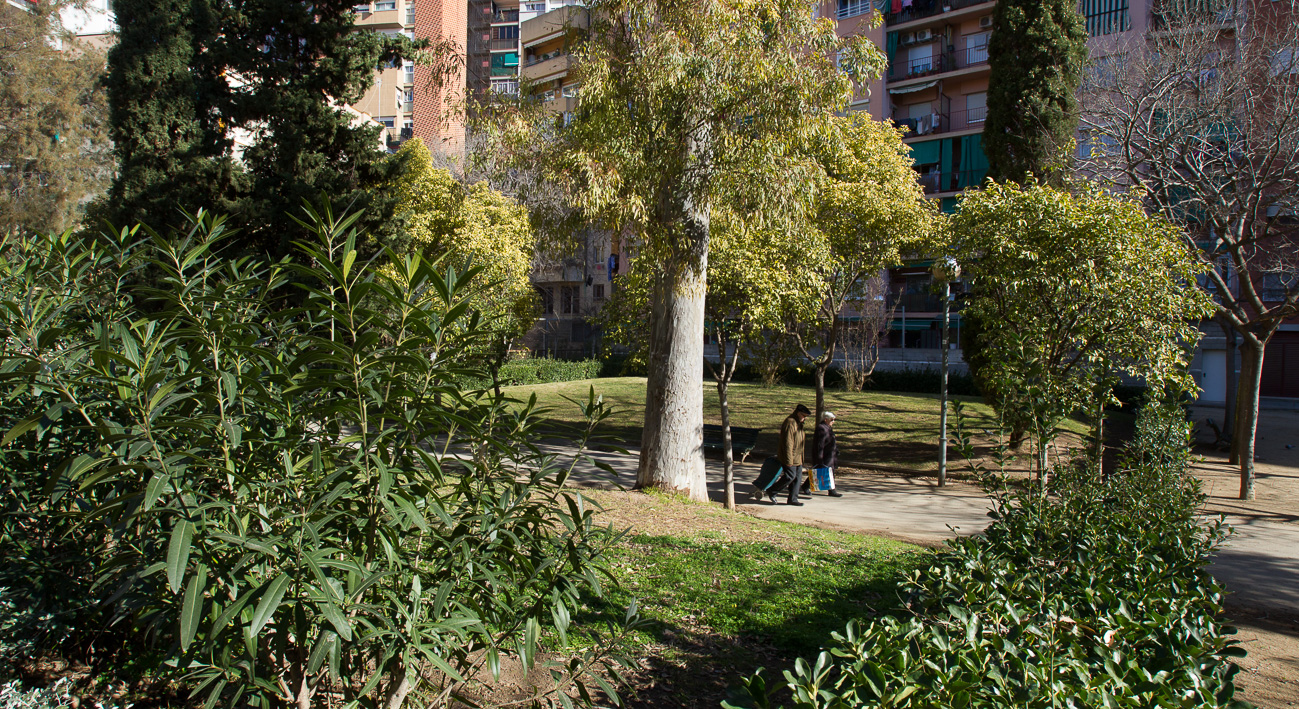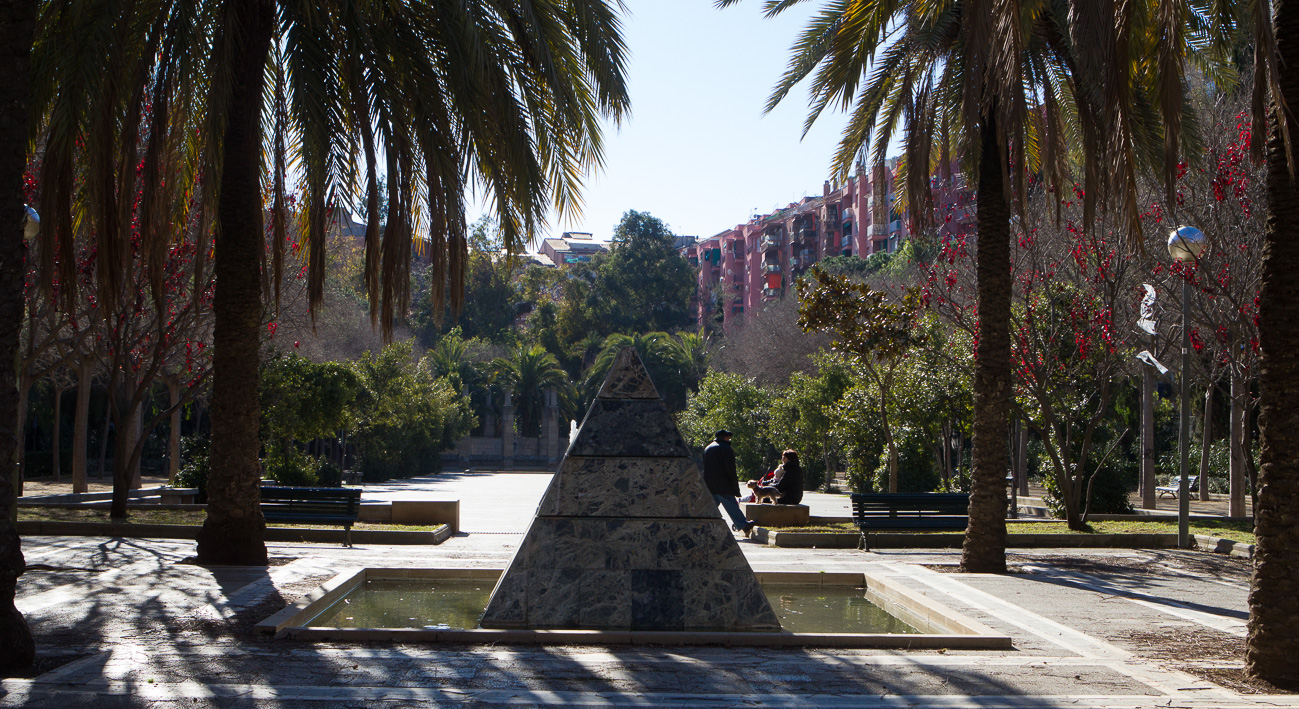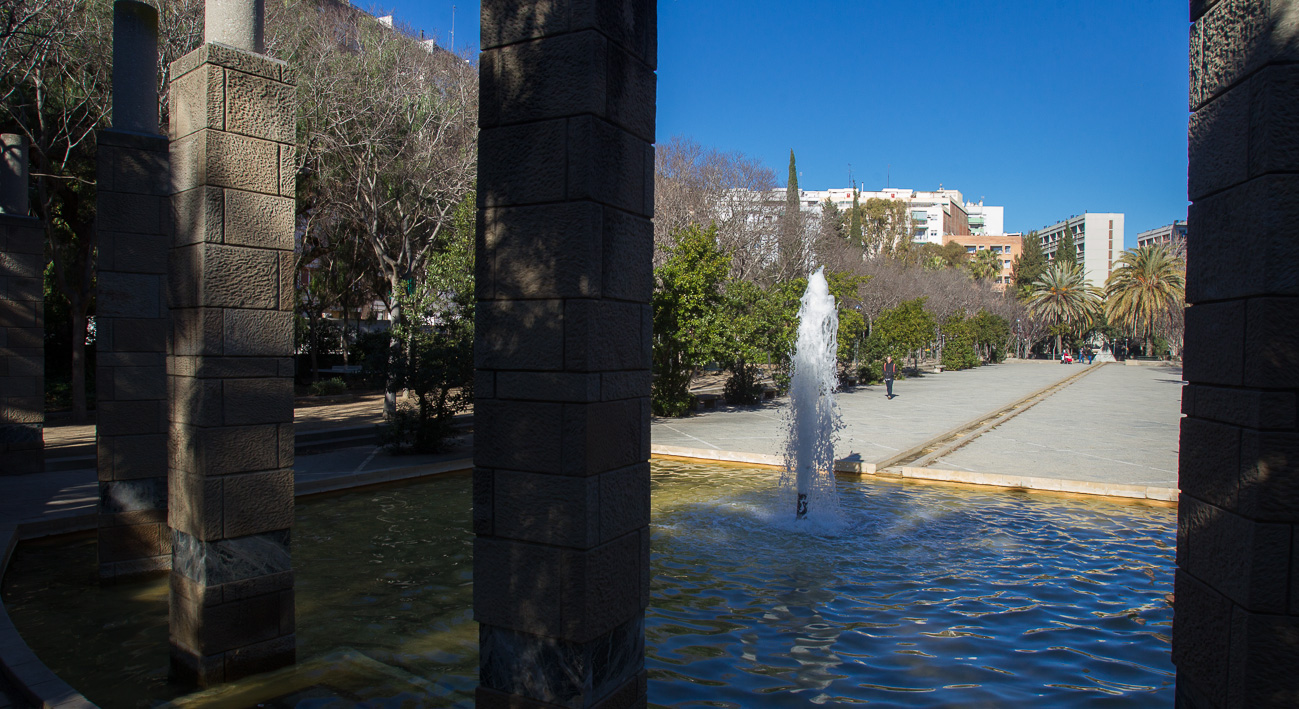On entering through the main gate on Carrer de la Mineria, visitors are offered a broad, majestic view of large palms and other trees. There is a winding pathway with a small lake on one side that leads to a large, stone-paved square. In the middle of the square there is a narrow canal with flowing water, which spouts from a pyramid turned into an original ornamental fountain. This is on a higher level, in a small square with benches under the shade of date and ornamental palm trees, surrounded by the reddish leaves of numerous cherry plum trees (Prunus cerasifera, of the atropurpurea variety).

History
Its current use as a public green space has a lot to do with the protests and campaigns of local residents at the end of the 1970s, following the reintroduction of democracy in Spain. Residents of the Port neighbourhood demanded the old factory be replaced by more than just blocks of flats. In 1980, the owners, the City Council and the Port Neighbourhood Residents’ Association reached an agreement that enabled the construction of the park that now bears the name of the factory owner: Gerard Sabaté.
The story doesn’t stop there, though. In Art públic, Jaume Fabre and Josep M. Huertas explain that when the factory, previously owned by the industrialist Josep Antoni Barret, was pulled down, a dozen underground corridors were discovered along with petrified petroleum. Barret was murdered in January 1918 by a hit-squad hired by the Germans, who wanted to eliminate the man supplying arms to the French during the First World War.

Biodiversity
It boasts, among other species, maidenhair trees (Ginkgo biloba), nettle trees (Celtis australis), weeping willows (Salix babylonica), river she-oaks (Casuarina cunninghamiana), Canadian poplars (Populus canadensis), pepper trees (Schinus molle), eucalyptuses (Eucalyptus globulus and Eucalyptus camaldulensis), stone pines (Pinus pinea), holm oaks (Quercus ilex), ombus (Phytolacca dioica), sycamore maples (Acer pseudoplatanus) and cypresses (Cupressus macrocarpa and Cupressus sempervirens).
The park also has fruit trees, such as persimmons (Diospyros kaki); petticoat palms (Washingtonia filifera), date palms (Phoenix dactylifera) and Canary Island date palms (Phoenix canariensis); aromatic plants, such as rosemary (Rosmarinus officinalis) and sage (Salvia officinalis), and shrubs such as sweet bays (Laurus nobilis) and glossy privet (Ligustrum lucidum ‘Variegatum‘). The shadiest area has common ivy (Hedera helix) covering the flower beds.

Art and Architecture
This fountain, the work of the same architects that designed this green space (Imma Jansana, Neus Solé and Daniel Navas), is made from green marble and brass, and stands 2.40 metres high.
The monumental square that extends right up to the base of the pyramid is wide and luminous, in contrast to the prevailing shade around it. In fact, everything revolves around this slightly sunken square, with its stone benches and accompanying green laurels. The 50-metre-long canal that crosses the park from end to end finishes at a small reservoir framed by eight truncated columns which act as a pergola.
On one side of the long square a small pathway full of nettle trees separates the large open and sunny space from the children’s play areas, secluded and surrounded by hedges. There are benches and fountains under the protective shade of evergreen trees.
-
- Phone number
- Tel.: 010
-
- Titularity
- Public center
- Address:
- C Mineria, 16
- Districte:
- Sants-Montjuïc
- Neighborhood:
- la Marina de Port
- City:
- Barcelona
Timetable
| Periode | Dies | Hores | |
|---|---|---|---|
| de l'1 de novembre al 31 de març |
Tots els dies | de 10:00 h a 19:00 h | |
| de l'1 d'abril al 31 d'octubre |
Tots els dies | de 10:00 h a 21:00 h |
aproximada, en funció de
l'horari solar (tanquen
quan es fa fosc, al capvespre)
- Sections of this equipment
- Àrea de joc infantil
- Àrea de joc infantil
- Àrea de joc infantil
- Taules ping-pong
- Àrea de joc infantil






